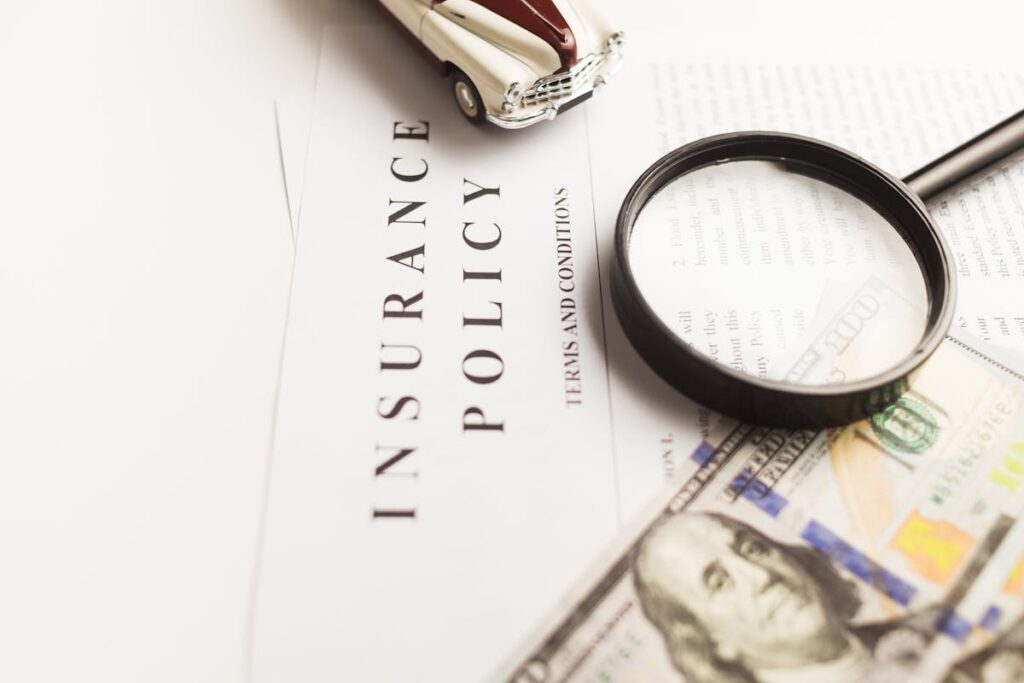In the complex landscape of motor insurance, the significance of uninsured motorist coverage, particularly in the context of California’s car accident claims, cannot be overstated. Considering the high prevalence of uninsured motorists in California, this coverage becomes a critical safety net for policyholders, cushioning the financial impact of accidents with insufficiently covered drivers. Yet, how well do we grasp this coverage, its implications and potential benefits? Let’s unpack the intricacies of uninsured motorist coverage, its role in car accident claims, and how it interacts with California’s unique insurance laws.
Understanding Uninsured Motorist Coverage
While it may seem complex at first glance, understanding uninsured motorist coverage is crucial for any driver in California. This insurance policy works to protect you in the event of a collision with uninsured drivers. It covers both bodily injury and property damage, up to the policy limits. It is a proactive measure for drivers, considering the high number of uninsured motorists on California roads. The coverage takes effect when the at-fault party cannot financially compensate for the damages caused. The intricacies of uninsured motorist coverage require a detailed understanding of policy limits and how they impact potential compensation. Fundamentally, it safeguards against the financial risks associated with accidents caused by uninsured drivers.
The Role of Uninsured Motorist Coverage
Building upon our understanding of what uninsured motorist coverage is, it’s now time to explore its role in safeguarding drivers in California. The primary function of uninsured motorist coverage is to protect drivers financially when an accident occurs with a driver who is uninsured or underinsured. Recent uninsured motorist statistics show a disconcerting number of uninsured drivers on Californian roads, highlighting the significance of this coverage. Depending on the coverage limits set in the policy, it can cover medical bills, lost wages, and property damage incurred in the accident. The role of uninsured motorist coverage is, as a result, vital in mitigating the financial risk to the policyholder in the event of an accident with an uninsured driver.
California’s Car Insurance Requirements
Despite the significant role of uninsured motorist coverage, it is essential to understand that California law mandates certain types of car insurance for all drivers.
- The minimum coverage requirements in California are: $15,000 for bodily injury or death to one person, $30,000 for bodily injury or death to more than one person, and $5,000 for damage to property.
- Drivers must show proof of insurance to law enforcement if pulled over or involved in an accident.
- Insurance penalties for driving without minimum coverage can be severe, including fines, license suspension, and vehicle impoundment.
- Insurance companies are required to electronically report insurance status for all private-use vehicles.
- Drivers can also meet financial responsibility requirements through a bond with the DMV or a cash deposit of $35,000.
How California Laws Affect Claims
Given the stringent insurance requirements in California, it’s vital to comprehend how these laws can impact claims. California’s established legal framework greatly influences claim processes, dictating precise steps and procedures that must be adhered to for a successful claim. The legal implications of not meeting these requirements can lead to a claim denial or reduce compensation. Mandatory coverage laws dictate that all motorists must carry insurance, which can complicate claims involving uninsured drivers. Additionally, California follows a “pure comparative negligence” rule in car accident cases, meaning a claimant’s compensation may be reduced by their percentage of fault. Understanding these laws is fundamental for maneuvering the intricate landscape of car accident claims in California.
Dealing With Uninsured Motorist Accidents
When an accident involves an uninsured motorist, the complexities of the claim process can escalate considerably in California. Understanding uninsured motorist rights and the significance of accident documentation is essential to navigate this complicated scenario.
Key aspects to evaluate include:
- Recognizing uninsured motorist rights, which mandate that the insured party is still entitled to compensation.
- The necessity of thorough accident documentation, including photos, police reports, and witness statements.
- The critical role of personal injury protection (PIP) coverage, which can cover medical expenses irrespective of fault.
- The potential need to file a lawsuit against the uninsured motorist to recover damages.
- Utilizing uninsured motorist coverage, if available, which can ease the financial burden.

Financial Implications of Uninsured Accidents
The financial implications of uninsured accidents in California are significant and multifaceted. Primarily, these implications encompass the overall cost burden of uninsured accidents, which is often assumed by the insured party, and the consequential impact on personal finances. It is essential to understand and analyze these financial consequences to grasp the full scope of the issue and its potential solutions.
Cost Burden of Uninsured Accidents
Maneuvering the financial aftermath of an accident involving an uninsured motorist can pose a significant burden. A thorough cost analysis is essential for understanding the financial implications.
- Immediate medical expenses: Treatment costs can escalate rapidly, especially if the injuries are severe.
- Property damage: Repairing or replacing a vehicle can lead to significant out-of-pocket expenditures.
- Lost wages: The victim may need time off work for recovery, leading to income loss.
- Legal expenses: Pursuing a claim against an uninsured motorist may require legal assistance.
- Increased insurance premiums: Your own insurance rates may rise after an accident with an uninsured driver.
Early financial planning can mitigate these burdens, ensuring adequate coverage and minimizing out-of-pocket expenses.
Impact on Personal Finances
A staggering number of California residents face the harsh financial consequences of uninsured motorist accidents every year. These accidents often lead to unexpected financial demands that necessitate budget adjustments and a reconsideration of financial planning strategies. Unanticipated medical bills, property repairs, and loss of income can strain even the most carefully planned budgets, leading to financial distress. The implications of such accidents can be long-term, potentially resulting in a depletion of savings or even bankruptcy. This underscores the importance of having adequate uninsured motorist coverage as a preventative measure. It acts as a financial buffer, protecting the individual from these unplanned costs and ensuring a degree of financial stability in the aftermath of an uninsured motorist accident.
Filing a Claim: Step-by-Step Guide
Maneuvering through the intricacies of filing an uninsured motorist claim in California can be challenging. It’s essential to understand the claims timeline and the importance of precise claim documentation. This step-by-step guide will help you navigate this process:
- Step 1: Report the accident to your insurance company promptly.
- Step 2: Gather all necessary claim documentation, including police reports, medical records, and evidence of damages.
- Step 3: Fill out and submit the uninsured motorist claim form provided by your insurer.
- Step 4: Cooperate with the insurance adjuster’s investigation by providing all requested information.
- Step 5: Follow up periodically to guarantee your claim is progressing within the claims timeline.
Understanding these steps can simplify the demanding task of filing an uninsured motorist claim.
Handling Disputes With Insurance Companies
In the domain of uninsured motorist coverage, disputes with insurance companies can often become a complex challenge. It is essential to understand the tactics that insurance companies may employ, as well as the methods available for dispute resolution. This knowledge can empower policyholders to navigate these disputes efficiently and with greater confidence.
Navigating Insurance Company Tactics
Guaranteeing rightful coverage after a motor vehicle accident often necessitates the challenging task of handling disputes with insurance companies. Understanding insurance negotiation strategies and gaining claims process insights can greatly aid in maneuvering insurance company tactics.
- Recognize the delay tactics. Some insurers may stall the process, hoping the claimant will lose patience and accept a lower settlement.
- Know your policy. Familiarize yourself with the terms and conditions to better understand what you are entitled to.
- Document everything. Keep a record of all communications and supporting evidence.
- Resist initial offers. First settlement offers are typically lowballs.
- Consult with a professional. An experienced attorney can provide valuable guidance and representation.
Armed with these tactics, you can confidently maneuver insurance company tactics and guarantee you receive the coverage you deserve.
Dispute Resolution Methods
While it can be a complex task, resolving disputes with insurance companies is a critical process for securing fair compensation after an accident. It is essential to understand the available dispute resolution methods, such as mediation strategies and arbitration options. Mediation is a voluntary process where a neutral third party helps the disputing parties reach a mutually satisfactory resolution. This strategy is often less confrontational and more cost-effective than litigation. On the other hand, arbitration involves an impartial individual or panel making a binding decision after hearing arguments and reviewing evidence. This option can be faster and less formal than a court trial. Both methods require careful preparation and strategy to maximize the chances of a favorable outcome.
Protecting Yourself: Prevention and Preparedness
To effectively safeguard oneself against potential financial losses from an accident with an uninsured motorist, it is essential to possess a robust understanding of prevention and preparedness measures. These strategies can be seen as aspects of both risk management and emergency preparedness.
Preventative measures include:
- Maintaining an extensive insurance policy that includes uninsured motorist coverage.
- Regular vehicle maintenance to avoid mechanical failures leading to accidents.
- Defensive driving skills to prevent accidents.
Preparedness measures encompass:
- Keeping an emergency kit in the car, including medical supplies and necessary documents.
- Having a plan for post-accident actions, such as contacting authorities and documenting the incident.
Through these steps, individuals can mitigate the financial consequences of accidents with uninsured motorists.
Frequently Asked Questions
What Is the Average Cost of Uninsured Motorist Coverage in California?
The average cost of this particular coverage in California varies, influenced by several coverage factors. However, the average premium typically ranges between $200 to $300 annually, but this is subject to individual insurance company rates.
Does Uninsured Motorist Coverage Also Cover Hit-And-Run Accidents?
Yes, in many cases hit-and-run accidents are covered. Under hit and run laws, insurance claims can be filed under uninsured motorist coverage, provided the incident is reported to the police promptly.
Can I Sue an Uninsured Driver in California?
Yes, you can sue an uninsured driver in California. The uninsured driver’s liability for the accident remains, despite their lack of insurance. However, collecting damages may be challenging, hence exploring other legal options is advisable.
How Can I Identify if a Driver Is Uninsured at the Scene of an Accident?
Identifying an uninsured driver at an accident scene involves requesting proof of insurance. If unavailable or expired, it suggests uninsured status. However, definite verification requires assistance from law enforcement or your insurance company post-accident.
What Happens if My Uninsured Motorist Claim Is Denied?
If your claim is denied, it’s likely due to specific claim denial reasons. It’s essential to understand these reasons, seek legal advice, and pursue an appeal process to challenge the decision effectively and promptly.

